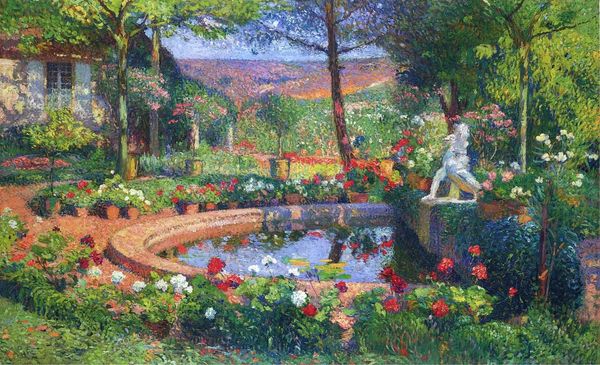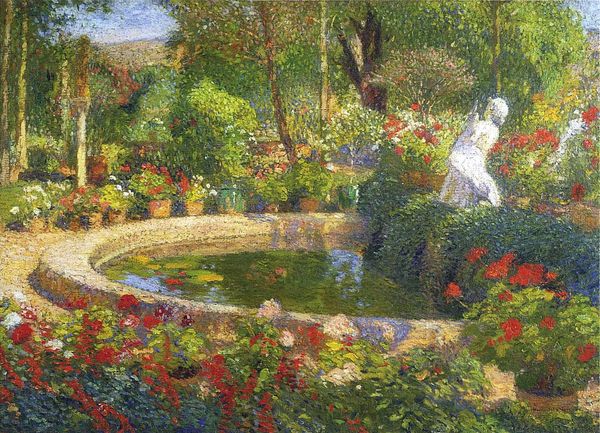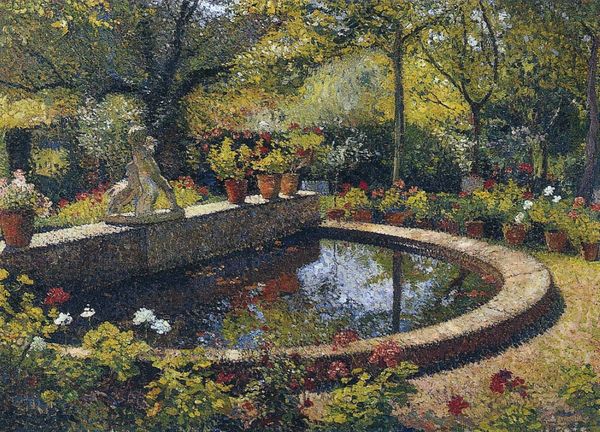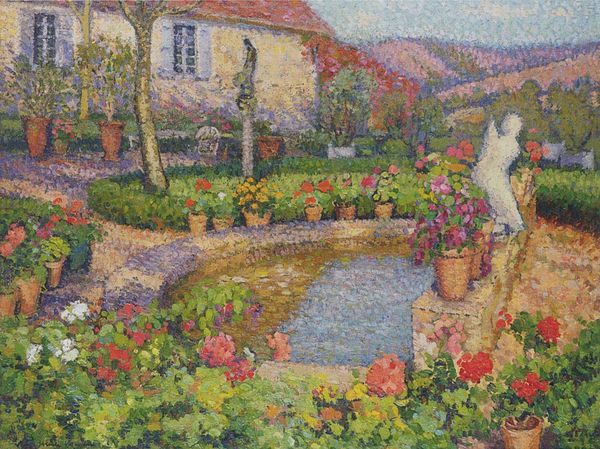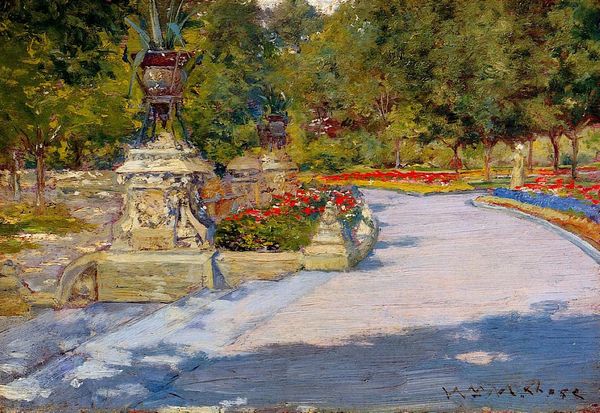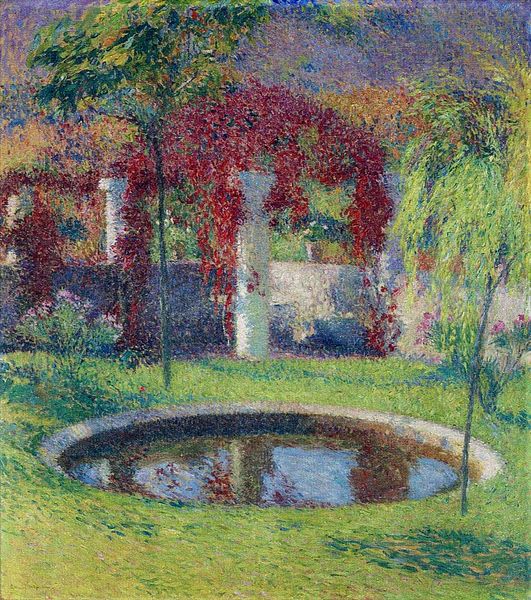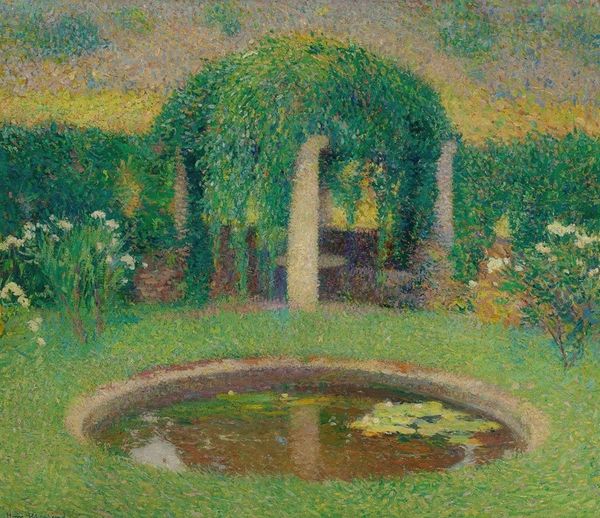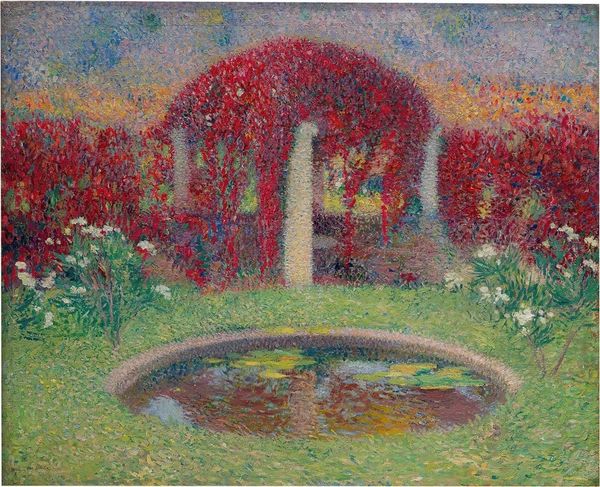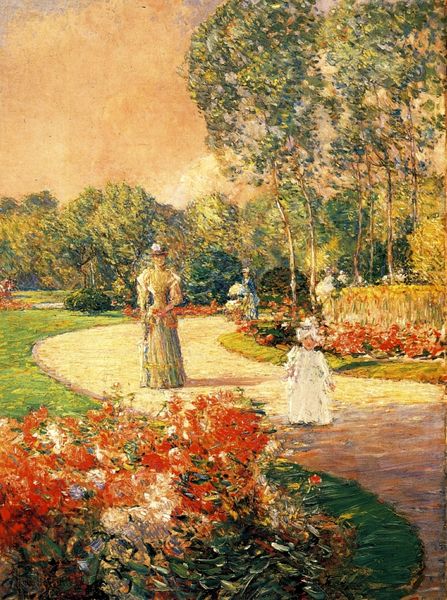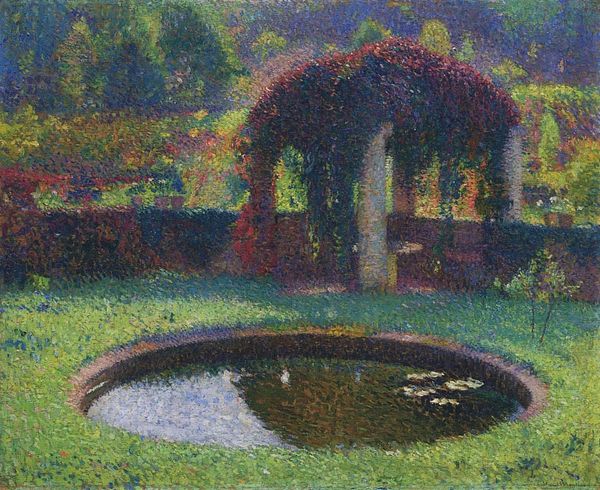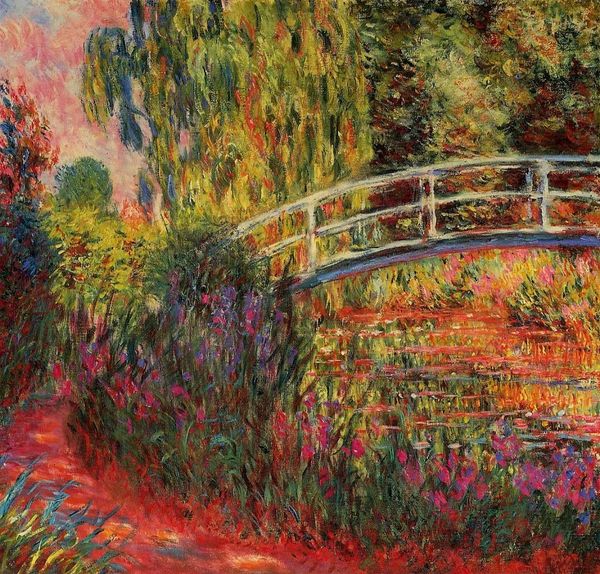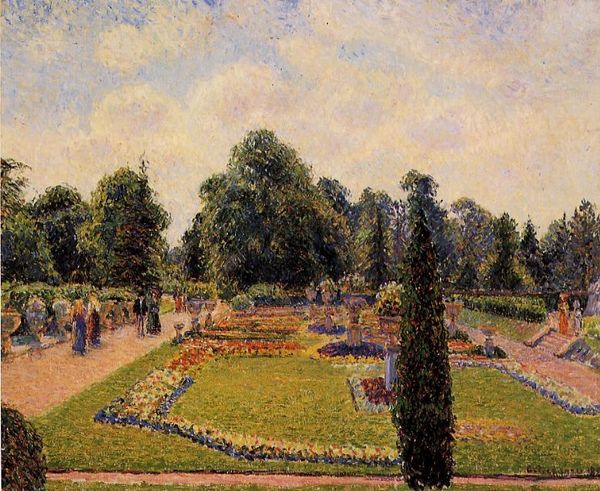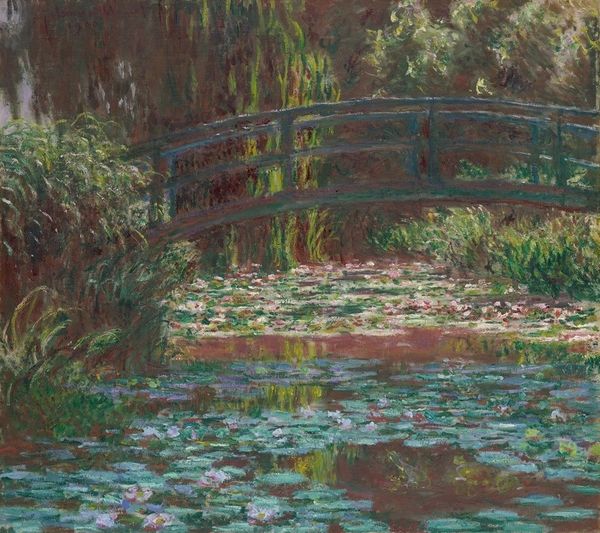
painting, plein-air, oil-paint
#
garden
#
painting
#
impressionism
#
plein-air
#
oil-paint
#
landscape
#
oil painting
#
post-impressionism
Copyright: Public domain
Curator: Ah, welcome. We're looking at "Fountain in Marquayrol", an oil painting by Henri Martin. The artwork reflects a vibrant garden scene, utilizing an Impressionistic, perhaps even Post-Impressionistic, technique. Editor: My immediate thought is serenity. There's something incredibly calming about the gentle dappling of light and the way the colors blend. It almost feels like stepping into a dream. Curator: Martin was very involved in the socio-political milieu of late 19th and early 20th century France. Remember the rise of leisure and bourgeois life. Scenes like this were deliberately created and consumed as reflections of those cultural shifts. Editor: Absolutely, but it’s worth examining whose leisure this actually represents. We must ask questions about labour and class to really appreciate who is invited into this 'dream.' Is this painting documenting the effects of capitalism, through which only the upper class can participate in such extravagant pleasure? Curator: I think it also speaks to the enduring human desire for harmony with nature, and Martin tapped into a tradition of idyllic landscape painting. I see evidence of plein-air techniques here as well. Editor: The pointillist touches feel crucial. Each little dab of paint, while contributing to the overall impression of tranquility, can also be read as individual points of concentrated capital—small parts making the wealth divide much more pervasive in everyday life. Curator: Well, certainly, art and leisure were becoming increasingly accessible, even if the social disparities remained pronounced. We must remember that Martin was one of many French Impressionists painting everyday leisure scenes. In regards to reception, one has to ask, what social conditions made people interested in idyllic visions of fountains in gardens. Editor: But also who had the privilege of such leisure? Perhaps by showcasing idyllic images, Martin, however inadvertently, glossed over many pressing problems that arose in modernizing cities? Perhaps we as viewers should be more critical when we interact with these pieces? Curator: I appreciate that point of view. It provides another lens, another method, with which we should use to look at this picture. Perhaps our listeners should examine how labor and leisure interact for them as well. Editor: Yes! Art isn’t static; it should be in continuous dialogue with the moment! It can be truly revolutionary when seen with critical thinking and the drive for real social change.
Comments
No comments
Be the first to comment and join the conversation on the ultimate creative platform.
